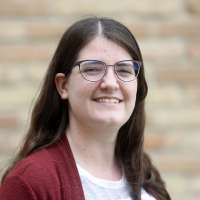Estimated read time: 2-3 minutes
This archived news story is available only for your personal, non-commercial use. Information in the story may be outdated or superseded by additional information. Reading or replaying the story in its archived form does not constitute a republication of the story.
SALT LAKE CITY — A University of Utah professor is bringing mathematics into even more real-world applications — and taking steps toward explaining cancer.
Fred Adler, a mathematics professor and director of the School of Biological Sciences, recently published a paper showing a mathematical model for how cancers develop.
In a College of Science article, Adler said he has worked on a model to explain the complexity of cancer development for a long time.
"It involved a plane trip where I worked out an extremely complicated approximate version of the method before figuring out, on solid ground, that the exact version was thoroughly simple," he said.
Adler used a differential equation to consider individual cells and the way they compete for resources and space. The framework considers evolution, stochasticity — a measure of how random something is — control and breakdown of control.
His model helps explain some cancer mysteries, like why most cancers occur later in life.
The traditional explanation for this question is that having six mutations in a single cell triggers cancer, which explains why time increases the potential for cancer.
Adler challenges that explanation — his model doubts the importance of individual cells. His modeling implies, along with other studies observing mutations in tissue, that cancer development depends on interactions with neighboring tissue.
"Detailed study of adults shows that few, if any, of their cells are 'normal.' ... Tissues are instead made up of lineages with ever-increasing numbers of aberrant traits, many of which promote excess growth," Adler said.
His paper explains that there are two effects of aging that lead to a higher chance of cancer: mutations building up and control breaking down. Humans have systems to keep mutated cells from growing, like communication between cells, but those systems get weaker as people age.
For cancer to succeed, Adler's paper says, it has to evade systems for control and repair, and "escape the many layers of internal and tissue level regulation."
The model helps explain why there are cancer-related mutations in healthy tissue that are not associated with future cancer.
"(The model) reproduces the rapid increase of cancer incidence with age, identifies the key aspects of control, and provides a complement to the focus on mutations that could lead to new treatment strategies," Adler said.
Hopefully, this understanding can help physicians and researchers find more ways to both treat and prevent cancer.
Adler's paper, titled "A modeling framework for cancer ecology and evolution," was published in The Royal Society Interface.
Correction: A previous version incorrectly spelled Adler's name as Alder.









